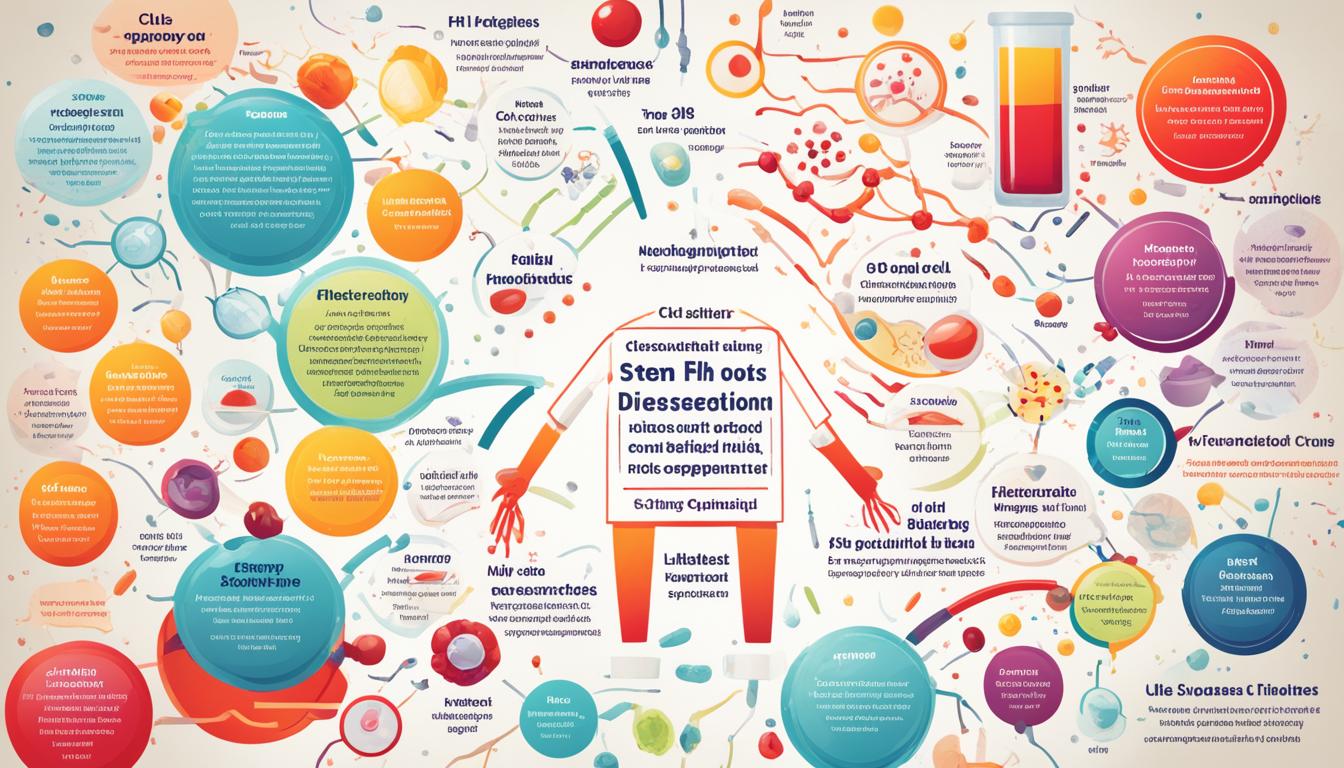Familial Hypercholesterolemia (FH) is a genetic condition that causes high levels of bad cholesterol (LDL-C) from birth. This can lead to heart problems early in life. It can come in different forms, with one being more common. FH is linked to changes in genes such as Apolipoprotein B, PCSK9, and LDLRAP1. Most cases are because of a problem in the LDLR gene.
When someone has FH, their body can’t remove LDL-C well. This makes it build up in their blood vessels and cause heart issues. FH is diagnosed by checking cholesterol levels. Treatment usually involves a healthy lifestyle and medicines like statins. In the future, gene and stem cell therapies might help fix the problem and manage cholesterol better.
Key Takeaways:
- Familial hypercholesterolemia (FH) inherits a problem with cholesterol levels.
- Changes in genes like Apolipoprotein B (ApoB) are linked to FH.
- Many FH cases come from an issue with the LDLR gene.
- Diagnosis includes checking for high cholesterol.
- Managing FH needs both lifestyle changes and medicine, like statins.
- Future treatments, like gene and stem cell therapy, could improve how we treat FH.
Epidemiology and Prevalence of FH
Familial hypercholesterolemia (FH) is a common genetic condition affecting about 20 million people worldwide. Yet, it is often not diagnosed correctly; only 10% know they have it. The numbers change by where you live and the rules for diagnosing it. Still, studies say around 0.19% to 0.32% of people in Asia, Europe, and North America have FH.
Knowing if someone has FH is more important when they already have heart issues. Having FH increases the risk of heart problems like heart attacks and diseases affecting blood vessels. It can even lead to an early death.
People with FH have high cholesterol from birth, which can cause heart problems early. Catching FH early by checking cholesterol levels is key. This way, we can start helping these people lower their cholesterol.
Advancements in Diagnosis and Stem Cell Therapy for FH
Diagnosing Familial Hypercholesterolemia (FH) involves looking closely at our genes. We check for changes in genes like LDLR, APOB, and PCSK9. But not everyone with FH shows these changes in their genes. This could be because other genes or ways of inheriting are also at play.
Now, there’s good news in treating FH with stem cell and gene therapies. Gene therapy plans to fix the problem by changing bad genes to good ones. It focuses on liver cells that can clear up to 70% of LDL, or ‘bad’ cholesterol. By modifying these liver cells outside the body and putting them back, we’re aiming to improve how FH is managed.
Stem cell therapy, on the other hand, uses induced pluripotent stem cells (iPSCs). These cells can become any type of cell. This helps in understanding FH better and creating new treatments. Also, using CRISPR technology for gene editing in FH brings hope for more precise treatments.
These new steps in diagnosis and therapy bring hope for FH treatment. They could mean better cholesterol control and health for those with this condition.

